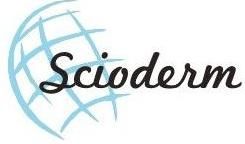A new biotech company has formed to develop a potential gene therapy for a rare, inherited disorder that leads to skin so fragile that it tears as easily as paper.
Telaria is the latest company unveiled by Replay, which itself is a new gene therapy biotech. Launched earlier this year, Replay operates a “hub-and-spoke” business model in which it develops its own platform technologies and identifies therapeutic areas that can be addressed by one or more of these technologies. Replay, which maintains operations in San Diego and London, then forms companies focused on particular therapeutic areas.
Rare skin diseases are the focus of Telaria. The company’s Telaria’s lead program is being developed for recessive dystrophic epidermolysis bullosa (RDEB), an inherited disorder in which genetic mutations block or disrupt the formation of collagen that connects the epidermis to the dermis. Absent the connections between these layers, the skin becomes easily susceptible to wounds and blistering. There are no FDA-approved therapies for the disorder. Treatment is mainly supportive care. Compared to another type of the disorder called dominant dystrophic epidermolysis bullosa, RDEB is more severe and can lead to scarring, severe pain, and problems in internal organs. Complications that can stem from RDEB include chronic inflammation and squamous cell carcinoma, a type of skin cancer.
Like other Replay companies, Telaria will leverage the larger capacity of the herpes simplex virus (HSV) to deliver a gene therapy. The adeno associated-viruses (AAV) frequently used for genetic medicines delivery have limited capacity for their genetic cargos. Replay has engineered a version of HSV that it claims is capable delivering up to eight times the payload capacity of AAV vectors. That capacity enables Replay to consider genes that are too big for AAV-based delivery. The company is aiming for even bigger genes. It is developing an HSV vector that could deliver up to 30 times the payload of AAV.
“There is currently no approved cure for individuals suffering from RDEB and I am aware, from my own personal experience, that the current standard of care is limited and does not provide long-term and sustainable benefit to patients,” Telaria co-founder Alexander Silver said in a prepared statement. “Replay’s synHSV technology, which enables the delivery of big DNA to the skin through its differentiated payload capacity, has the potential to disrupt the genetic skin disease gene therapy field, and to bring much needed treatments to patients as rapidly and safely as possible.”
Telaria joins a small field of companies pursuing epidermolysis bullosa treatments. Krystal Biotech developed B-VEC, a topical and redosable gene therapy designed to deliver two copies of the COL7A1 gene, which encodes a protein key to collagen formation. The Pittsburgh-based company’s gene therapy is currently under FDA review; a regulatory decision is expected by late February. Abeona Therapeutics is developing an RDEB cell therapy called EB-101. Earlier this month, the New York-based biotech reported positive Phase 3 data, paving the way for plans to submit a biologics license application with the FDA. Amicus Therapeutics entered the epidermolysis bullosa chase in 2015 with the acquisition of Scioderm, a biotech developing a wound-healing topical drug. But Amicus ended up stopping development of that program two years later following the failure of a Phase 3 clinical trial.
Replay launched in July backed by $55 million in seed financing led by KKR & Co. and OMX Ventures. Telaria is the second Replay company unveiled this year, following the launch last month of retinal eye disease biotech Eudora. That company is developing gene therapies for retinitis pigmentosa, Stargardt disease, and Usher syndrome type 1B.
Public domain photo by the CDC









